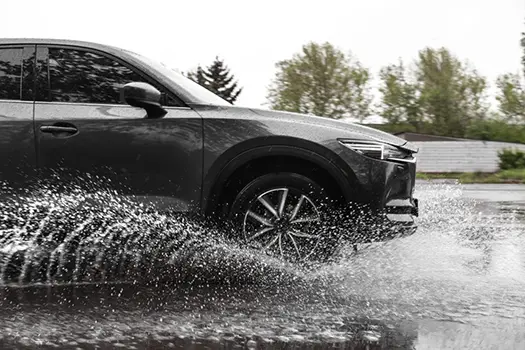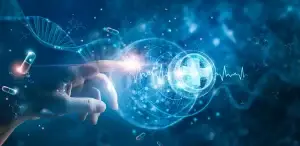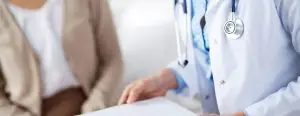
Driving in the rain presents unique challenges that require extra caution and preparedness. Reduced visibility, slippery roads, and hydroplaning risks make it essential to adjust your driving habits accordingly. According to the U.S. Department of Transportation, wet pavement contributes to approximately 70% of weather-related accidents, with 46% caused by rainfall.
To help you navigate safely, we’ve compiled a comprehensive guide with crucial driving in the rain tips to minimize risks and ensure a safer journey.
Table of contents
Make an appointment
1. Reduce Your Speed
One of the most important things to remember when driving in the rain is to slow down. Wet roads reduce your vehicle’s traction, making it harder to stop quickly. Speeding in rainy conditions significantly increases your risk of hydroplaning and losing control of your vehicle.

Why Slowing Down Matters:
- Water between the tires and the road can reduce grip.
- Stopping distance increases on wet surfaces.
- Speeding through puddles can cause hydroplaning.
Safe Speed Tips:
- Reduce your speed by at least 5 to 10 mph in light rain.
- In heavy rain or standing water, lower your speed even more.
- If the rain is torrential, consider pulling over in a safe location.
2. Turn on Your Headlights
Visibility is one of the biggest challenges when driving in the rain. Turning on your headlights not only improves your ability to see the road but also ensures that other drivers can see you.
Headlight Safety Tips:
- Turn on low-beam headlights (never use high beams in foggy or rainy conditions).
- Most states require headlights when windshield wipers are in use.
- Keep your headlights clean and check that they’re functioning properly.
3. Maintain a Safe Following Distance
Wet roads increase stopping distances. A vehicle traveling at 60 mph on dry pavement takes about 240 feet to stop—but in the rain, that distance can double.
How to Maintain a Safe Distance:
- Follow the three-second rule—increase to five or more seconds in wet conditions.
- Watch for brake lights ahead and start slowing down earlier than usual.
- Avoid sudden braking to reduce skidding risks.
4. Avoid Driving Behind Large Trucks & Buses
Large trucks and buses disperse significant amounts of water, creating a spray that can reduce visibility.
What You Can Do:
- Stay out of their spray zone by maintaining a longer following distance.
- If passing a large vehicle, do so quickly and cautiously.
- Use windshield wipers at a high setting when behind large vehicles.
5. Check Your Windshield Wipers & Defroster

Have you ever seen a car with hazy windows on the inside? This can be caused by a non working defroster or an actual source of water in the car such as water in the trunk, or water soaked carpets or floor mats. Your windshield wipers and defroster are crucial for visibility. If they aren’t working correctly, your ability to see the road will be severely impaired.
Tips for Maintaining Wipers & Defroster:
- Replace wiper blades every 6 to 12 months.
- Check that your defroster is fully functional.
- If your windows fog up, use air conditioning or defrost settings to clear moisture.
6. Tire Maintenance: Prevent Hydroplaning
Hydroplaning is a dangerous phenomenon that can occur when driving on wet roads. It occurs when a vehicle’s tires lose contact with the road surface due to a layer of water between the tires and the road. This can cause the driver to lose control of the vehicle and can result in a crash. Your tires play a crucial role in keeping you safe while driving in the rain. Bald or underinflated tires can drastically increase the risk of hydroplaning.
Tire Safety Checklist:
- Check tread depth: Use the penny test—if you can see all of Lincoln’s head, your tread is too low.
- Ensure proper inflation: Check tire pressure monthly.
- Rotate tires regularly: Uneven wear can affect traction.
What to Do If You Hydroplane:
- Ease off the gas—don’t slam on the brakes.
- Steer gently in the direction you want to go.
- Wait for traction to return before accelerating again.
7. Watch for oil Slicks on the Road
Rain after a dry spell brings oil to the surface, creating extremely slippery conditions, especially at intersections.
How to Avoid oil Slicks:
- Be extra cautious in the first 10-15 minutes of rainfall.
- Avoid braking suddenly when approaching intersections.
- Drive in the tracks of vehicles ahead to avoid standing water and oil patches.
8. Avoid Cruise Control in the Rain
While cruise control is useful on dry roads, it can be dangerous in wet conditions.
Why You Shouldn’t Use Cruise Control:
- It can delay your reaction time in an emergency.
- Reducing speed manually is safer than relying on cruise control.
- It may cause hydroplaning if tires lose contact with the road.
9. Stay Away from Flooded Roads
Driving through deep water can cause serious damage to your vehicle and pose life-threatening risks.

Dangers of Driving Through Flooded Roads:
- As little as 6 inches of water can cause loss of control.
- 12 inches of water can sweep away a small car.
- Water can damage your engine and electrical systems.
What to Do Instead:
- Find an alternate route or turn around.
- If you must drive through standing water, go slowly and test your brakes afterward.
10. Be Extra Cautious Around Pedestrians
Pedestrians and cyclists may still be active during rainy weather, but they are often harder to see.
How to Protect Pedestrians While Driving in the Rain:
- Reduce speed in residential and urban areas.
- Be mindful of crosswalks and sidewalks.
- Avoid splashing pedestrians by steering clear of large puddles.
11. Stay Alert and Avoid Distractions
Distractions are even more dangerous in rainy conditions. Keeping your full attention on the road can prevent accidents.
Tips for Staying Focused:
- Put your phone away and enable “Do Not Disturb.”
- Minimize eating or adjusting controls while driving.
- Keep both hands on the steering wheel for maximum control.
12. Know When to Pull Over
If rain becomes too heavy, visibility drops, or roads flood, pulling over is the safest option.
How to Safely Pull Over:
- Find a safe parking lot or side street, never stop on the highway.
- Turn on hazard lights to alert other drivers.
- Wait until conditions improve before resuming your trip.
Conclusion
Driving in the rain requires adjustments to your normal driving habits to ensure your safety and the safety of others. By slowing down, maintaining a safe distance, and keeping your vehicle in top condition, you can reduce the risk of accidents and arrive safely at your destination.
Key Takeaways:
✔ Slow down and increase following distance. ✔ Use headlights and maintain visibility. ✔ Check tires, brakes, and wipers regularly. ✔ Avoid flooded roads and cruise control. ✔ Stay alert and be prepared for emergency situations.
By following these tips, you’ll be better equipped to handle wet roads and drive safely in the rain every time. Stay cautious and drive smart!

 Since 2012,
Since 2012, 

